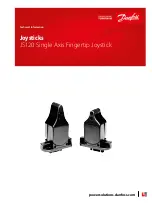
Setting 0: Triggered when a Run Command Is Issued (Normal)
Setting 1: Triggered when an External Baseblock Is Released
u
b4: Timer Function
The timer function is independent of drive operation and can delay the switching of a digital output triggered by a digital input
signal and help eliminate chattering switch noise from sensors. An on-delay and off-delay can be set separately.
To enable the timer function, set a multi-function input to “Timer Function Input” (H1-
oo
= 18) and set a multi-function
output to “Timer output” (H2-
oo
= 12). Only one timer can be used.
n
b4-01, b4-02: Timer Function On-Delay, Off-Delay Time
b4-01 sets the on-delay time for switching the timer output. b4-02 sets the off-delay time for switching the timer output.
No.
Name
Setting Range
Default
b4-01
Timer Function On-Delay Time
0.0 to 3000.0 s
0.0 s
b4-02
Timer Function Off-Delay Time
0.0 to 3000.0 s
0.0 s
n
Timer Function Operation
The timer function switches on when the timer function input closes for longer than the value set to b4-01. The timer function
switches off when the timer function input is open for longer than the value set to b4-02.
function operation:
b4-01
b4-02
b4-01
b4-02
Multi-function Contact
On (Closed)
Off (Open)
On (Closed)
Off (Open)
Multi-function Contact
Output: Timer Function
Input: Timer Function
ON
ON
ON
ON
(
H1-
□□
=18)
(
H2-
□□
=12)
Figure 5.13 Timer Operation
u
b5: PID Control
The drive has a built-in Propor In Derivative (PID) controller that uses the difference between the target value
and the feedback value to adjust the drive output frequency to minimize deviation and provide accurate closed loop control
of system variables such as pressure or temperature.
n
P Control
The output of P control is the product of the deviation and the P gain so that it follows the deviation directly and linearly. With
P control, only an offset between the target and feedback remains.
n
I Control
The output of I control is the integral of the deviation. It minimizes the offset between target and feedback value that typically
remains when pure P control is used. The integral time (I time) constant determines how fast the offset is eliminated.
n
D Control
D control predicts the deviation signal by multiplying its derivative (slope of the deviation) with a time constant, then adds
this value to the PID input. This way the D portion of a PID controller provides a braking action to the controller response and
can reduce the tendency to oscillate and overshoot.
D control tends to amplify noise on the deviation signal, which can result in control instability. Only use D control when
absolutely necessary.
n
PID Operation
To better demonstrate PID functionality,
illustrates the PID output when the PID input (deviation) is at a constant
level.
5.2 b: Application
160
YASKAWA SIEP YAIP1U 01C AC Drive - P1000 Technical Manual
Содержание P1000
Страница 4: ...This Page Intentionally Blank 4 YASKAWA SIEP YAIP1U 01C AC Drive P1000 Technical Manual...
Страница 26: ...i 2 General Safety This Page Intentionally Blank 26 YASKAWA SIEP YAIP1U 01C AC Drive P1000 Technical Manual...
Страница 140: ...4 11 Test Run Checklist This Page Intentionally Blank 140 YASKAWA SIEP YAIP1U 01C AC Drive P1000 Technical Manual...
Страница 430: ...A 4 Drive Derating Data This Page Intentionally Blank 430 YASKAWA SIEP YAIP1U 01C AC Drive P1000 Technical Manual...
Страница 504: ...B 16 Defaults by Drive Model This Page Intentionally Blank 504 YASKAWA SIEP YAIP1U 01C AC Drive P1000 Technical Manual...
Страница 568: ...D 3 UL and CSA Standards This Page Intentionally Blank 568 YASKAWA SIEP YAIP1U 01C AC Drive P1000 Technical Manual...
Страница 591: ...Index This Page Intentionally Blank YASKAWA SIEP YAIP1U 01C AC Drive P1000 Technical Manual 591...
Страница 593: ......
















































